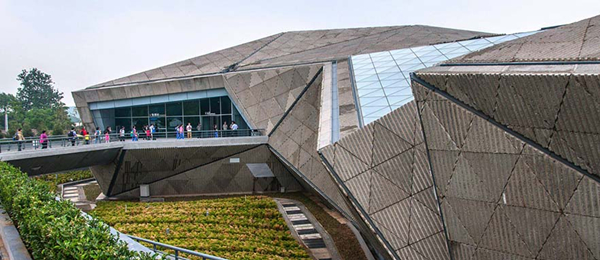Zhoukoudian Relics Museum


Image from the official website of the Zhoukoudian Relics Museum. [Photo/zkd.cn]
The Zhoukoudian Relics Museum of Palaeoanthropology is located in Fangshan District in Beijing. It systematically introduces the life, environment and conditions of the Peking Man who existed 600,000 years ago, the Xindong Man of 100,000 years ago and the Upper Cave Man of 18,000 years ago.
History
Construction of the museum first began in 1953. The museum was selected as a national protection site in 1962 by the State Council. Covering more than 8,000 sq m, it was listed as a Protected Cultural Relics by the State Council of China in 1961 and was selected as a World Cultural Heritage Site by UNESCO in 1987.
In 2008, it was named a first-class national museum by the State Administration of Cultural Heritage and was designated a national education base by the China Association of Science and Technology in 2012.
Collection
The museum collects over 7,000 cultural relics, of which 1,000 are on display. In 1929, Chinese palaeoanthropologist Pei Wenzhong unearthed the first complete fossilized skull of Peking Man in Longgu Mountain-- a discovery that shook the world. In 1936, anthropologist Jia Lanpo discovered another three fossilized skulls of the Upper Cave Man. In the late 1960s, Xindong Man relics dating from 100,000 years ago were excavated in the same place. The series of important discoveries provided a critical component in research on the origin of mankind.
The front of the exhibition hall is a solid model of Longgu Mountain, with stone specimens dating back 100 to 400 million years in the Zhoukoudian area, reflecting the geological changes over time. The models of the fossilized skulls, the fire relics and various stone tools of the Peking Man are exhibited in No. 1 Hall. The restored cave of the Upper Cave Man is in No. 2 Hall. No. 3 Hall contains a necklace made by the Upper Cave Man as well as a model of the distribution of amniotes fossils and the dwellings of the ancient people. In No. 4 Hall are relics of the ancient people found both in China and all over the world at different periods, such as stone tools and drawings, paintings and other artworks of the Paleolithic Period.
Address: No 1, Zhoukoudian Street, Fang Shan District, Beijing
Website: http://www.zkd.cn/zkdeng/ (English)
http://www.zkd.cn/ (Chinese)
Open hours: April 1 - October 31 9:00-16:30 (no admission after 16:00).
November 1 - March 31 9:00-16:00 (no admission after 15:30).
E-mail: gugong@dpm.org.cn
Ticket: Adults: 30 yuan
Middle and Primary School and University students: 15 yuan
Persons with disability are admitted free of charge by presenting valid IDs.
Online booking: http://www.zkd.cn/yyfw.jhtml
MOST POPULAR
- 1 China to continue opening up its mega-market to world: premier
- 2 Policies concerning expats, foreign enterprises in November 2025
- 3 China to enhance convenience for inbound tourism: minister
- 4 Departure tax refund applications surge 285% as inbound tourism rebounds
- 5 China's foreign trade up 3.6% in first 11 months of 2025







